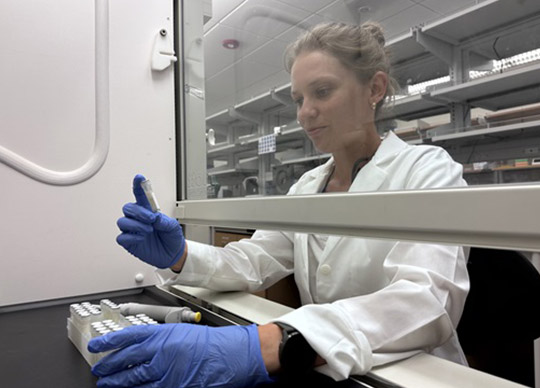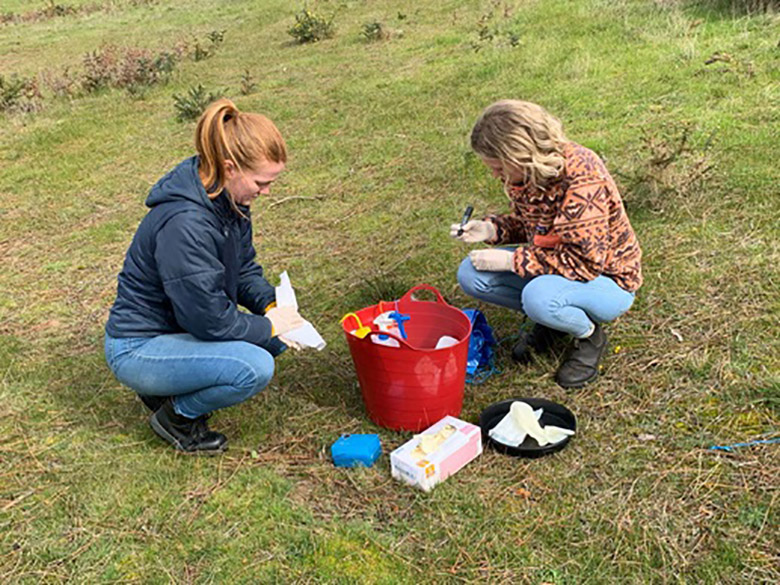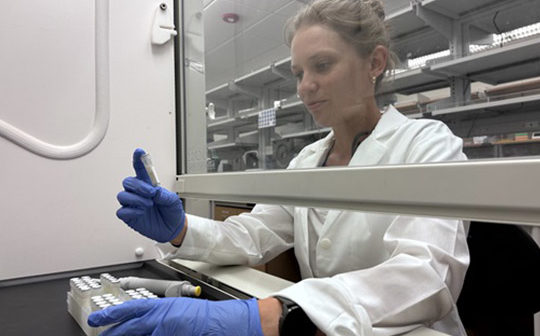
The airborne fraction of soil, or dust, contains biological and chemical ‘signatures’ which act as a fingerprint to a specific location.
Australian forensic science experts, led by Flinders University, have highlighted the usefulness of the latest technology by testing a series of field sites in South Australia for their unique chemical and biological profiles.
This work is strong evidence for including dust as a medium in forensic intelligence gathering to incorporate as a standard tool in future forensic casework, the scientists say in a new study published in an international journal.
Previous research, including experts at the Forensic DNA Laboratory at Flinders University, has established the viability of testing even the smallest trace of dust, down to only 3mg, as potential evidence of the location or source of material, personal effect or an object.

“Dust is found everywhere. It stays on clothing and items after you have travelled and leaves a trace for where you have been,” says Flinders University forensic science researcher Dr Nicole Foster, who currently is a researcher at the Smithsonian Environmental Research Institute in the USA.
“Armed with this knowledge, we undertook a field experiment, leaving items at various locations in South Australia to collect dust and observe whether these chemical and biological (bacteria and fungi) signatures were distinct between sites.
“We found that the dust recovered from each item contained chemical and biological profiles that were unique to sites but these profiles were variable within sites and over time.
“This work is a proof of concept for using dust as a medium in forensic intelligence but more work needs to be done before integrating this tool for forensic casework.”
Coauthor and SA forensic DNA scientist, Dr Duncan Taylor, says bacteria and fungi signatures in soil can be used as key evidence to link back to the scene of a crime, however dust is relatively new to the field of forensics.

“From the dust samples collected from around South Australia, we were able to correctly predict provenance for 67% of samples using bacteria profile and 56% using fungi profiles,” he says
“It’s likely this biological variation within each site led to this level of incorrect predictions but we observed the within-site variability was not greater than between sites.
“This means bacteria and fungi can be unique to specific locations and why dust could be a key tool in forensic intelligence in future.”
While there’s still a long way to go in this field, researchers conclude that both chemical and biological analyses of dust samples show potential applications in forensic science.
The article – The secret hidden in dust: Assessing the potential to use biological and chemical properties of the airborne fraction of soil for provenance assignment and forensic casework (2023) by Nicole R Foster, Duncan Taylor, Jurian Hoogewerff, Michael G Aberle, Patrice de Caritat, Paul Roffey, Robert Edwards, Arif Malik, Michelle Waycott and Jennifer M Young – has been published in Forensic Science International Genetics (Elsevier) Published: August 22, 2023 DOI: 10. 1016/j.fsigen.2023.102931
htps://doi.org/10. 1016/j.fsigen.2023.102931
The study was funded by the SA Government Defence Innovation Partnership program to senior author Dr Jennifer Young (InFoDust project), with support from the Terrestrial Ecosystem Research Network (TERN), Geoscience Australia, the SA Genomics Centre and National Collaborative Research Infrastructure Strategy (NCRIS) via BioPlatforms Australia.






